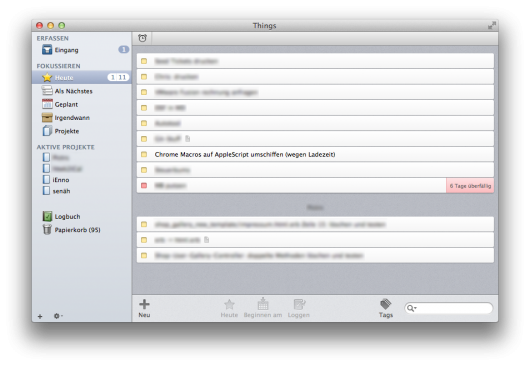

If you have no deleted tasks, you don’t see the trash bin. Things is wise about scaling the complexity of its interface, only ever showing you what’s relevant to your usage if you don’t use tags, the tag navigation isn’t shown to you. It’s clean without being sparse, delightful without being showy, and organized without being rigid. It feels comfortable, inviting, and alive in a way that’s utterly engrossing. While there are many things to love about the app, these are the aspects that had the most impact on my usage. In functional terms, Things 3 is a measured re-thinking: it doesn’t fix what wasn’t broken, but streamlines and builds upon previous versions. Since the earliest days of the App Store, Things has made a name for itself as one of the most beautiful, effective task management apps on the market. The goal is to highlight the strengths and weaknesses of each in a way that makes it clear which is the best fit for your needs. What follows is not an attempt to crown a winner - it’s an examination of how these equally-compelling apps compare in long-term use. The only way to properly assess these options is to dive in and spend a long time using them they need to flex to accommodate both the busiest and calmest times in my life. Some are heavily focused on a particular methodology such as GTD, while others cast a wider net, catering to all sorts of workflows.įrom that vast array of options, I keep coming back to a stalwart few that have proven themselves to be capable, thoughtful, and genuinely helpful in the pursuit of a more productive, organized life: Things, OmniFocus, and Todoist. Over the years, we’ve seen multiple apps emerge to tackle this problem. Thus, we wanted to put together this comparison show how Things compares to OmniFocus compares to Todoist.įrom Left to Right: Things, OmniFocus, Todoist It’s remarkable how much nuance exists within the concept of task management. And, with so many excellent task management apps to choose from, it can be difficult to know which one is right for you if you are still on the fence one way or another.

But we know that different people have different needs and preferences. In another article, we have already written about how we believe Things is the best productivity and task management app. It just seems to be easier to use and gets used more and better for that.Here is a comparison of the top three productivity apps (Things vs OmniFocus vs Todoist) to help you decide which is the best fit. The tags can provide structure (still tweaking that).

The daily review process brings more actions to my attention every morning. So this week I returned to the simplicity of things. After using that for some time I noticed I still used for logging actions, but most of the time fixing thes on a date, the complexities (probably my OF setup) made me look at my actions less frequently. I then took OF (OS X, ipad, iphone) and saw a lot of use ins possibilities to tweak, structure projects and actions and the built in weekly review. Using it for a few months the lack of structure in the project list (can become a long list to scroll through) made me look for something else. After reading the D Allen books and some research on the web I picked up things for iPhone and iPad. I'm not an expert in GTD and associated tools. But for basic, bread-and-butter task-management, TaskPaper does a pretty good job. Some will need bigger and better functionality. One for "CONTEXTS" and another for "PEOPLE" with each of these Taskpaper documents in them. Once I made those two changes, my productivity got a huge boost. Waiting for John Doe to return this item for me (sent email 6/1/12) Waiting for John Doe to get back to me on this item 2 to delegate to John Doe next time I meet with him a task I've delegated to myself to do for John Doe another task John Doe asked me to complete The format for each of these documents would consist of the following: (I like to keep taps and typing to a minimum).Īnother change was to create a separate document for each client I would meet with. You can tap a new document faster than you can type into a search box. I originally began with one large Taskpaper document for my location contexts, but I discovered that making separate documents for each context is actually faster to use: And it's formatting as a basic text file makes it easy to interface with other programs.īut it wasn't until I made two fundamental shifts that I was able to make the most of it on the iPhone: I've found TaskPaper to be very effective for basic task-management on the iPhone / iPad. I needed an iOS solution for interfacing with my own approach to getting things done on a mac.


 0 kommentar(er)
0 kommentar(er)
